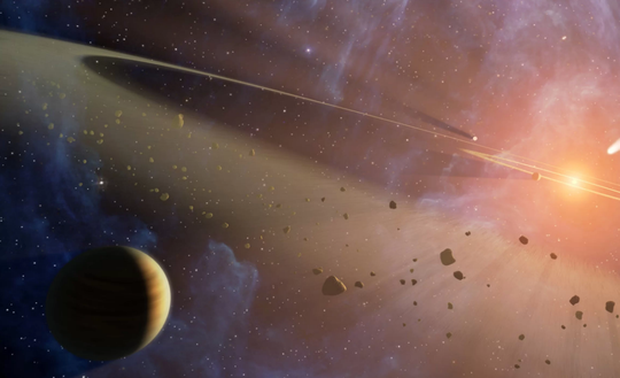With the pair of “twin” planets 2MASS 0249 c and Beta Pictoris b, the scenario of finding a replica of outer space is quite possible.
The research team at the University of Hawaii and the University of Arizona (USA) were stunned to observe a new planet named 2MASS 0249 c orbiting a pair of red dwarfs.
The new planet resembles a well-known planet, Beta Pictoris b, in size and brightness to spectral data.
The newly discovered planet is a perfect copy of a previously known planet – NASA Illustrations
In other words, they are an indistinguishable “twin”. The strange thing is that these two planets are very far from each other and belong to two other solar systems. While the newly emerging star belongs to the solar system with a pair of brown dwarfs 2MASS J02495639-0557352AB, the previously known Beta Pictoris b revolves around a star named Beta Pictoris.
Both are gas giants with an estimated mass of 11.6 times Jupiter and are far removed from their central star. Scientists have also identified them as brothers, born from the same “manger”.
“Star incubator” is a term for a molecular cloud whose masses may be smaller than our Sun but can reach 1,000 to 100,000 suns. The “star nursery” is made up mostly of H2, like a cradle that creates and grows newborn stars, surrounded by older stars.
A new planet has been discovered (circled in red) thanks to a telescope – image provided by the team
The difference is that they currently live in two very different environments. The pair of brown dwarfs that the newly discovered planet orbits is very faint, only as bright as 1/2000 the sun. Meanwhile, the known planet’s host star is 10 times brighter than the sun.
Further, Dr Kaitlin Kratter (University of Arizona) stated that the “twins” were formed under rather unfair conditions: while Beta Pictoris b grew from dust particles, 2MASS 0249c appears to be formed from of what remains after the “death” of a giant gas cloud.
This difference greatly facilitates the observation of the discovered planet – Beta Pictoris b – from the earth side. Beta Pictoris b is a 20 million year old planet.
The study uses data from several observation stations: the Canada-France-Hawaii telescope. The W. M. Keck Observatory, the Apache Point Observatory are located in the United States. The work has just been published in the scientific journal Astronomical Journal.
Space, Sci-News




